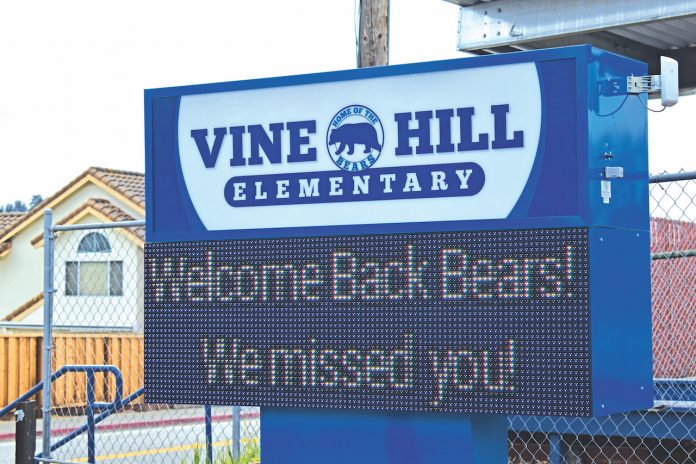As Tanya Krause, the superintendent of Scotts Valley Unified School District, prepared her welcome letter for parents, she began how she might have in any other year: “We are pleased and excited to start school with students on campus, Wednesday, August 11, for full-time, in-person instruction,” Krause wrote. “Teachers return from their summer break on August 9th to prepare for another school year and they are eager to see your students arrive in their classrooms.”
Had this been written in, say, 2018, “full-time” and “in-person” may have seemed a bit jargony, but not too out of place. This time around, however, it references two years of learning upended by the novel coronavirus. It also served as a fitting introduction to one of the big takeaways of the memo—alongside other local districts, masks are going to be required in the classroom in Scotts Valley.
It’s been a summer of evolving recommendations as the 2021-22 year approaches and the Delta variant made its way to the United States.
On July 9, the Centers for Disease Control and Prevention published guidance for primary and secondary schools, stating “masks should be worn indoors by all individuals (age 2 and older) who are not fully vaccinated.”
Later that month the CDC reaffirmed its emphasis on indoor masking, writing on its website that students should “wear a mask indoors in public if you are in an area of substantial or high transmission.”
This week the level of community transmission in Santa Cruz County was “substantial,” according to the CDC.
On Monday, the California Department of Public Health released its own guidance, requiring that all students “must have access to safe and full in-person instruction and to as much instructional time as possible” and that masks should be worn by all students and staff.
That same day, the 11 county superintendents distributed a letter to families that pointed to the American Association of Pediatrics’ recommendation that masks should be worn indoors by all who are above age 2—regardless of vaccination status, since the measure has proven effective at reducing the spread of Covid-19.
“This past year-and-a-half has been among the most challenging periods in the history of public education, and we all hope the worst of the pandemic is behind us,” the letter read. “We have come far, and have much of which to be proud of … We must all do our part to continue our momentum, keep our classrooms open, and keep our community safe.”
Shortly afterward, the release was posted as an update on Bonny Doon Union Elementary School District’s website, to help inform parents of how the district planned to implement mask-wearing.
In her letter, Krause wrote that all students, staff and visitors on SVUSD campuses will be required to wear masks when indoors, noting that those measures will allow the district to forgo social distancing in classrooms. Mask-wearing outdoors will be optional in most situations.
Krause also asked parents, staff and students to monitor for Covid-19 symptoms daily, and noted those with relevant medical conditions won’t have to mask. Scotts Valley Unified will also offer an independent study option for families that don’t want to send their kids back to the classroom. And she requested parents who want to volunteer to get vaccinated.
In an interview with the Press Banner, Chris Schiermeyer, superintendent of San Lorenzo Valley Unified School District, said administrators across the county worked together to decide on mask rules, in an effort to provide the best educational opportunities under the circumstances.
“We know that, although some students were very successful in distance-learning, and had that family environment to support them, many parents have to work,” he said. “Providing the at-home opportunity is difficult for them, and they want to be able to send their students to school.”
For SLVUSD, that means ensuring around 2,300 pupils are protected from a virus that’s getting better at spreading.
“We want to have our students wear their masks inside,” Schiermeyer said. “We just feel like that is the best approach to ensure that we can continue to provide the in-person instruction and not have an outbreak, or not have an exposure that would set us back, like we were in previous years.”










